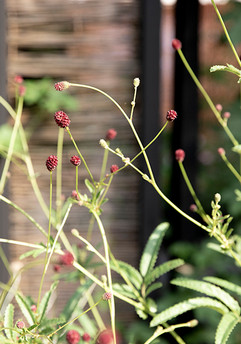
Alusta pavilion
2022
How can we break the dichotomy between nature and culture through architecture? What kind of space unites rather than separates? How can we live together with the more-than-human community? These questions are discussed at the Alusta Pavilion.
The pavilion was built on the courtyard between the Museum of Finnish Architecture and the Design Museum in Helsinki, and it is open to the public from June 2022 to October 2023.
The project explores nature-culture relations and offers a place for encounters between humans and non-human animals in urban space. The pavilion functions as a platform for environmental discourse, both on the level of its form and materiality, and the different activities which take place there. It comprises a pollinator friendly meadow and structures made with clay in its different forms; unfired and fired brick and rammed earth. Alusta was realised by a multidisciplinary group lead by Suomi/Koivisto architects.
Alusta offers a space for thinking about our place as part of a more than human community. The pavilion takes its form through collaboration of plants, human visitors, natural processes and passage of time. The clay and wood structures offer habitats for people, plants and insects. Fungi take part in maintaining the natural cycles and offer shelter and nutrition to insects.
In collaboration with ecologists from the University of Helsinki, the project explores increasing biodiversity in the urban environment and demonstrating the importance of soil and its microbes for the wellbeing of the ecosystem. The human visitor can participate in caring for the soil and plants and in building the pavilion.
Alusta is part of architect Maiju Suomi’s practice-led doctoral research at Aalto University Department of Design. It also acts as a test laboratory for architect Elina Koivisto’s inquiry into natural materials in construction.
The project is realized in collaboration with Raseko earth building school and students of design and architecture in Aalto University. The project is supported by Abl-Laatat, Fiskars, University of Helsinki, Hyötykasviyhdistys, Iki Carbon, Ilmarinen, Kekkilä Oy, Kääpä Biotech, Rudus Oy, Stark Suomi Oy, Suomen pintakäsittely, Uula Color Oy and Wienerberger Oy. The project is funded by the Kordelin Foundation, The Arts Promotion Centre of Finland, and the Greta and William Lehtinen Foundation.














